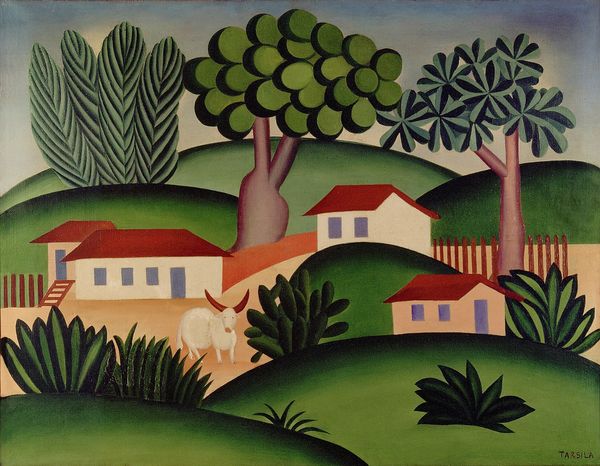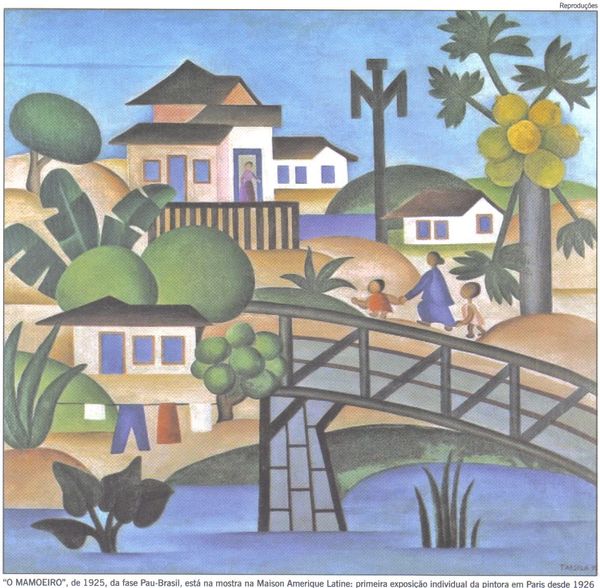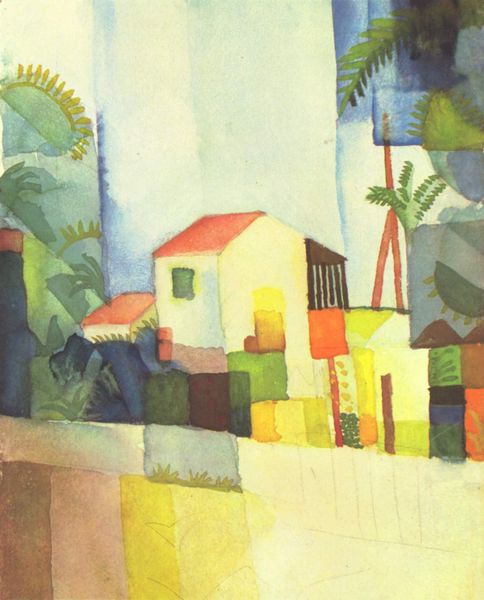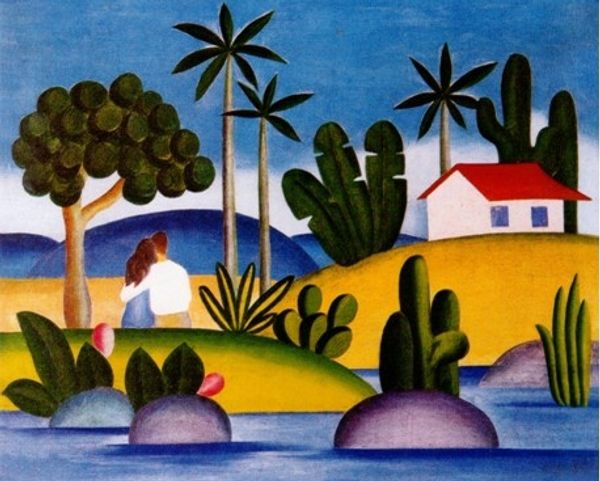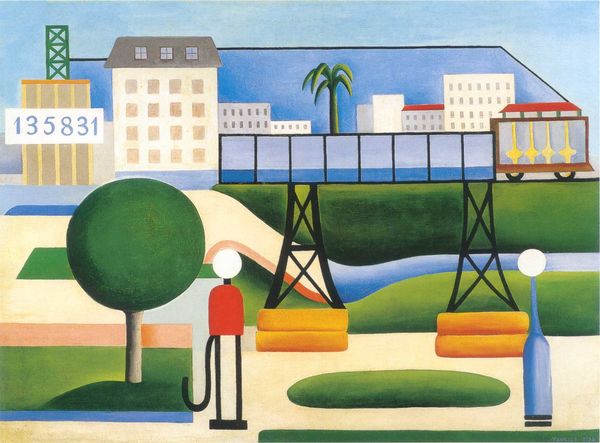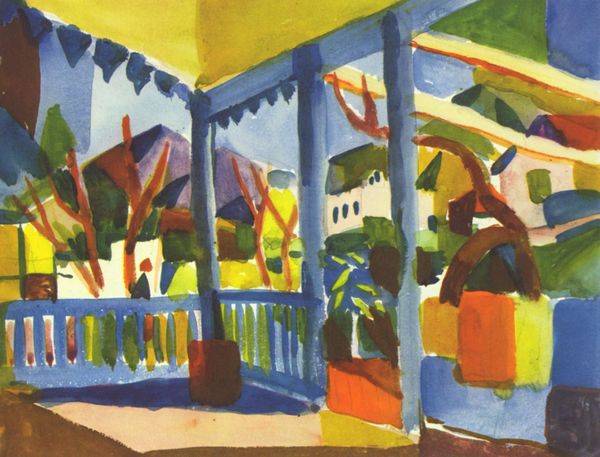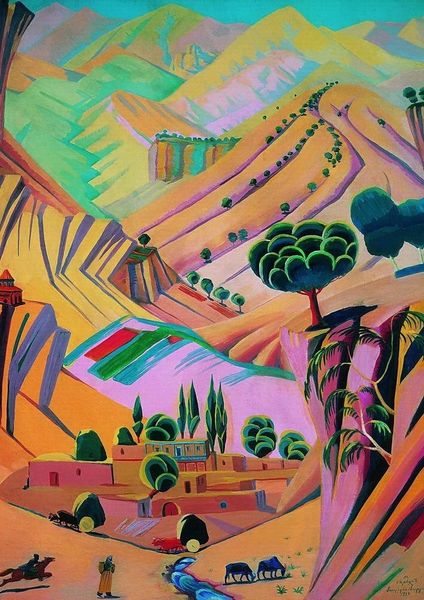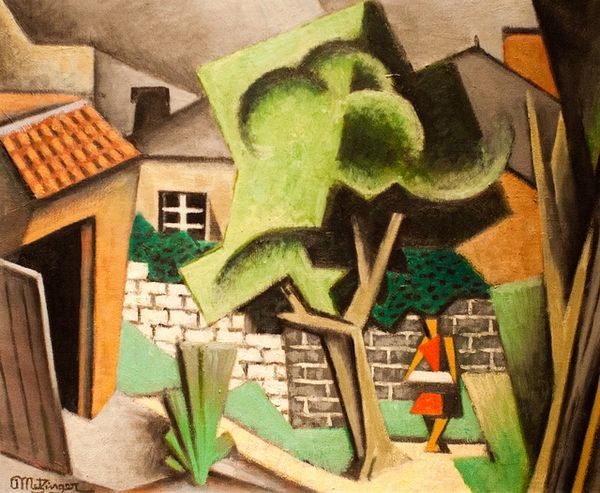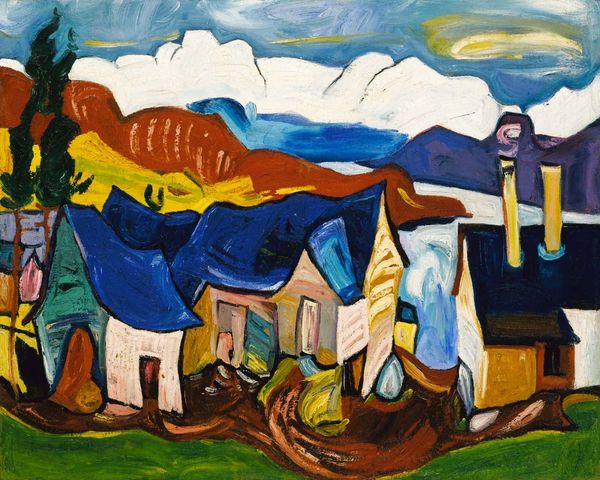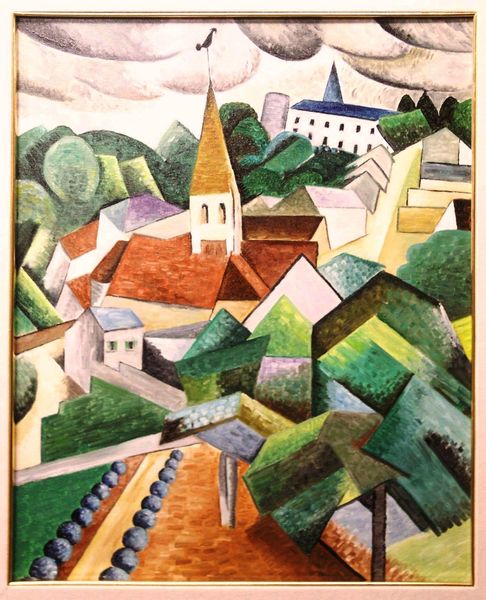
painting
#
cubism
#
painting
#
landscape
#
geometric
#
abstraction
#
cityscape
#
modern architecture
#
modernism
Copyright: Tarsila do Amaral,Fair Use
Editor: Here we have "Cityscape," a painting by Tarsila do Amaral. It looks like a landscape rendered with a very geometric, almost childlike simplicity. I’m drawn to its flatness and the somewhat dreamlike quality it evokes. How do you interpret this work? Curator: I see a powerful statement about cultural identity and the rapidly changing landscape of Brazil in the early 20th century. Amaral was deeply involved with the Modernist movement there, which sought to reconcile European influences with Brazilian heritage. The geometric forms, reminiscent of Cubism, are merged with elements that evoke the Brazilian landscape – what could be hills, the stylized trees. But what's important to acknowledge is how modernism as an ideology served colonial interests and shaped perceptions and the use of land in the developing world. What does it suggest to you that those elements, while present, are decontextualized? Editor: I guess it's about placing an international art language onto a very particular local setting, or vice versa. What's being elevated here and why? Curator: Precisely. Amaral asks us to question what "progress" looks like. Is it simply adopting European aesthetics and industry? Or does it mean forging a new path that values indigenous knowledge and traditions? Notice the stark contrast between the organic forms of the hills and the rigid geometry of the buildings. What kind of tensions and inequalities might this contrast be illustrating? Editor: I see that. The geometry feels... imposed. It is artificial. I see the hills as what was, the geometry as what's to come, but isn't necessarily welcome. Curator: An insightful interpretation! Perhaps it shows us how art can be both beautiful and critical, forcing us to confront uncomfortable truths about our history and the ongoing impacts of colonialism. Editor: It’s interesting to think of a painting like this as a form of resistance, as well as commentary, too. It makes me want to learn more about Amaral and the Modernist movement in Brazil!
Comments
No comments
Be the first to comment and join the conversation on the ultimate creative platform.
